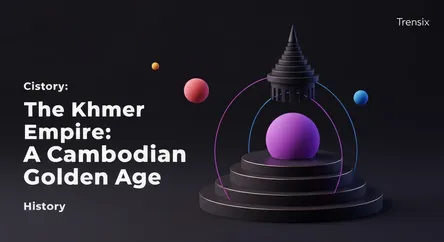History
The Khmer Empire: A Cambodian Golden Age

Discover the Khmer Empire, the powerful civilization that dominated Southeast Asia for 600 years and left behind the magnificent temples of Angkor.
What is it?
The Khmer Empire was a powerful Hindu-Buddhist civilization that flourished in Southeast Asia from 802 to 1431 CE. Centered in what is modern-day Cambodia, its influence at its peak extended across much of Thailand, Laos, and southern Vietnam. This era is also known as the Angkor period, named after its capital city, Angkor, which was the largest pre-industrial urban complex in the world. The empire's first ruler, Jayavarman II, declared himself a "universal ruler" in 802, marking the start of a dynasty of god-kings. The Khmer were renowned for their incredible achievements in architecture, engineering, and art, most famously the temple of Angkor Wat, the world's largest religious monument.
Why is it trending?
The Khmer Empire remains a topic of immense interest due to its spectacular and enduring legacy. The ruins of its capital, Angkor, particularly Angkor Wat, are a UNESCO World Heritage Site and a major global tourist destination, attracting millions annually. Ongoing archaeological research and restoration efforts continually reveal new insights into the complexity of the civilization. Furthermore, the empire's sophisticated water management systems, which supported a massive population, are studied by modern engineers and hydrologists. Its history represents a golden age of Cambodian culture and is a vital part of the nation's identity, with Angkor Wat featured on the national flag.
How does it affect people?
The legacy of the Khmer Empire profoundly shapes modern Cambodia and the wider Southeast Asian region. Its architectural and artistic styles are a source of national pride and identity for Cambodians. The empire's innovations in water management and urban planning had a lasting impact on the region's development. Religiously, the syncretic blend of Hinduism and Buddhism patronized by the empire influenced the spiritual landscape of Cambodia, which remains predominantly Buddhist. The Khmer script also formed the basis for the modern Thai and Lao alphabets. For people worldwide, the magnificent temples of Angkor serve as a powerful testament to the ingenuity and artistic achievements of this great civilization.